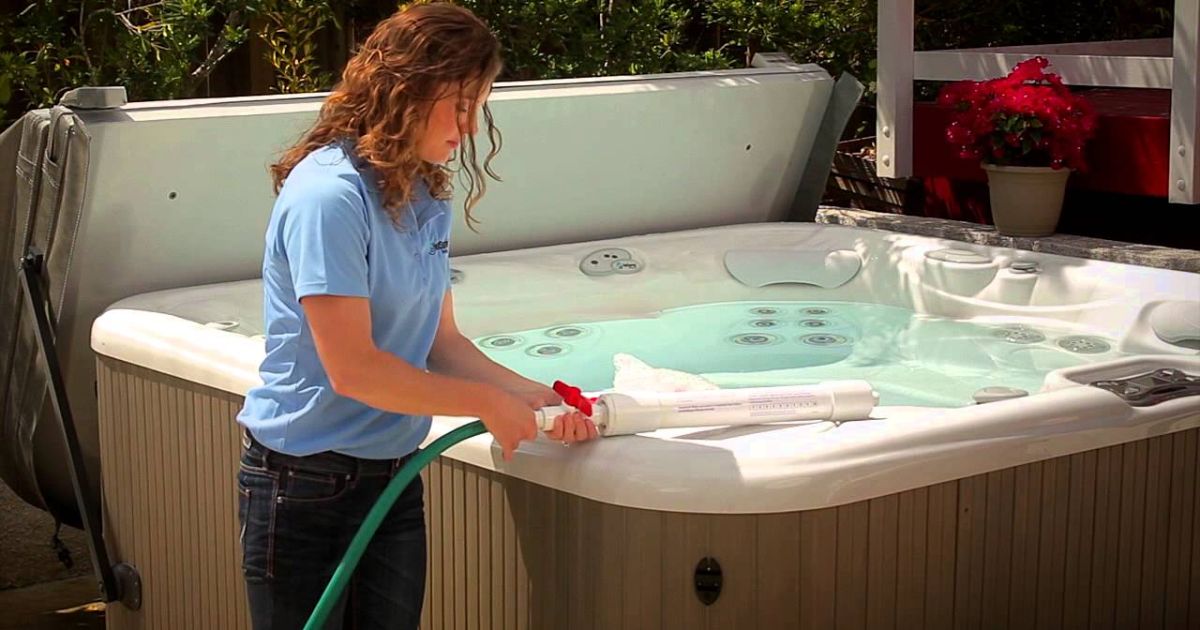Draining a hot tub is an essential maintenance task to ensure its longevity and optimal performance. Over time, water quality can deteriorate due to regular use, necessitating a thorough drainage and cleaning process. This procedure helps in removing accumulated debris, oils, and contaminants that may compromise the hot tub’s hygiene and affect its components.
An organized and careful approach to draining a hot tub is vital to prevent damage to the tub itself or its surroundings. Understanding the steps involved, from turning off the power supply to safely draining the water, contributes significantly to a successful and hassle-free process.
Furthermore, proper drainage allows for inspection and cleaning of the tub’s interior, promoting better hygiene and preventing potential issues like clogged pipes or bacterial growth. It’s an opportunity to assess the tub’s condition and perform any necessary maintenance before refilling it for further use.
In this comprehensive guide, we’ll walk through the step-by-step process of effectively draining a hot tub, ensuring a smooth and efficient procedure.
Preparation Steps Before Draining
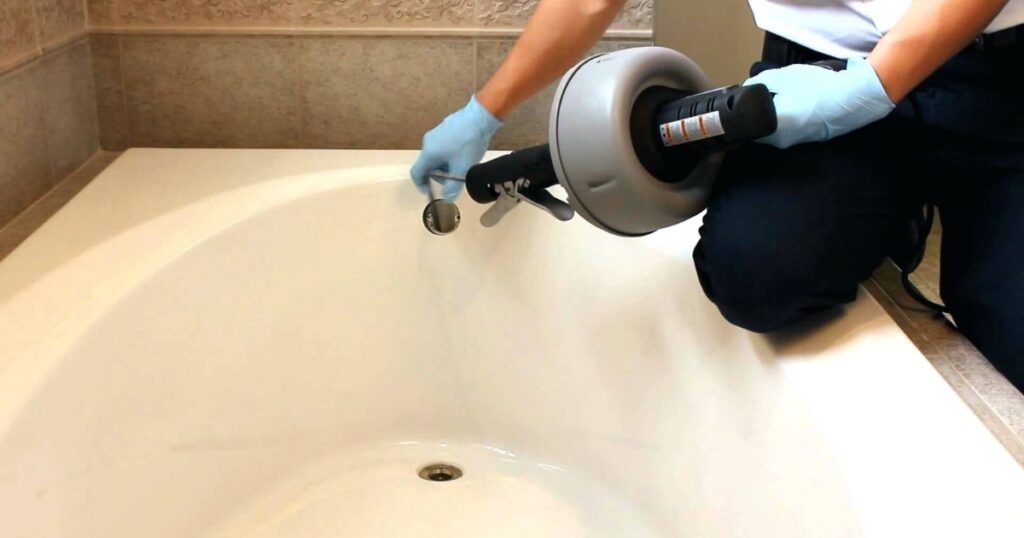
Certainly! Here are the preparation steps you should consider before draining your hot tub:
Gather Supplies
Gathering supplies is crucial before draining your hot tub. Collect essential tools like a garden hose for drainage, cleaning agents suitable for your tub’s material, and a submersible pump if necessary. Additionally, have a bucket handy for residual water and any accessories recommended by the manufacturer. Having these supplies readily available ensures a smoother and more efficient draining process.
Read the Manual
Reading the manual is crucial before draining your hot tub. It provides specific guidance on locating the drain valve, safety measures, and manufacturer-recommended procedures. This essential resource outlines any unique steps or precautions necessary for your particular hot tub model. Following the manual ensures a smooth drainage process, prevents damage to the tub, and maintains safety standards.
Check Water Temperature
Before draining your hot tub, verify that the water temperature is safe to handle. Hot water can cause burns or discomfort if not cooled adequately. Allow the water to cool down to a comfortable temperature, typically below 100°F (37.8°C), before starting the drainage process. Taking this precaution ensures your safety while handling the water and prevents any accidental burns during the draining procedure.
Turn Off Power: Turning off the power supply to your hot tub is a crucial safety measure before draining. Locate the main power switch or circuit breaker dedicated to the tub and switch it off to cut electricity to the unit. This action prevents any potential electrical hazards during the drainage process, ensuring a safer environment for both you and the hot tub’s components.
Plan for Water Disposal
Planning for water disposal involves deciding where the drained water will flow. Ensure it’s directed towards a suitable drainage area, like a sewer, lawn, or a designated area capable of handling the volume of water. Consider local regulations regarding water disposal and opt for environmentally responsible methods. This foresight prevents water wastage and potential damage to surroundings, making the drainage process more efficient and eco-friendly.
Clear Access
Clear access to the drain area is crucial before beginning the hot tub drainage process. Remove any items obstructing the drain valve to facilitate easy attachment of hoses or pumps. Ensure there’s ample space around the tub’s access point for convenient maneuvering during the drainage. This preparation step minimizes potential obstacles, allowing for a smoother and more efficient draining experience.
By taking these preparatory steps, you’ll create a safer and more efficient environment for draining your hot tub and ensure a smoother overall process.
Turn Off the Power Supply
Turning off the power supply” is a critical safety measure before draining a hot tub. Locate the electrical panel or power source dedicated to the tub and switch it off to prevent any risk of electrical shock during the drainage process. This precaution is essential as water and electricity can be a hazardous combination. Confirm that the power is completely off by checking that all controls, lights, and heating elements are inactive.
It’s advisable to follow manufacturer-specific guidelines outlined in the hot tub’s manual to ensure proper shutdown procedures. Taking this step not only safeguards against potential accidents but also prevents damage to the tub’s electrical components. Prioritizing safety by disconnecting the power supply is a fundamental precautionary measure that should be strictly observed before initiating any maintenance or drainage tasks on a hot tub.
Locate and Access the Drain Valve
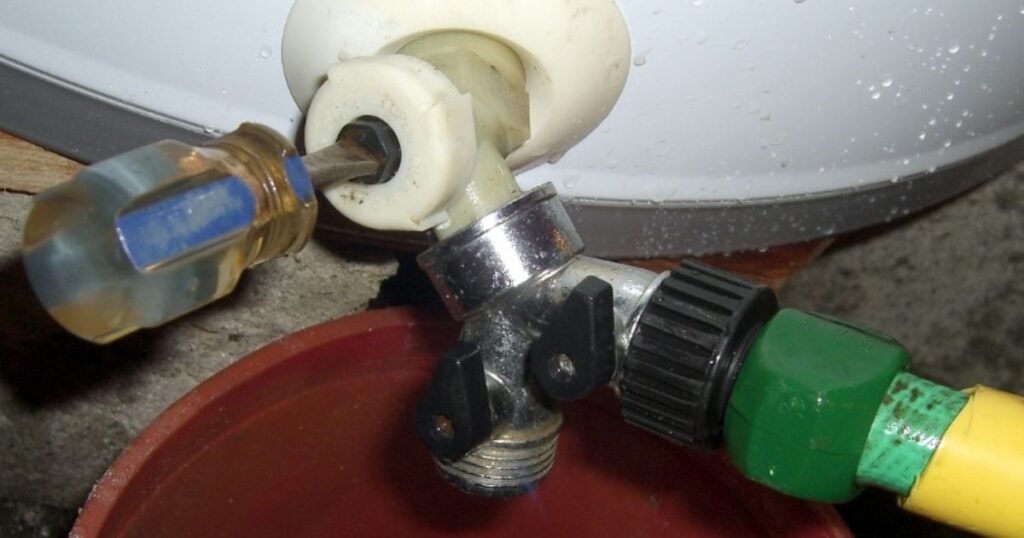
Locating and accessing the drain valve is a crucial step in the hot tub draining process. Refer to your hot tub’s manual to pinpoint the valve’s position, which is typically located near the bottom of the tub. Commonly, it’s situated on the exterior of the spa, often disguised or covered to prevent accidental openings.
Once identified, ensure clear access to the drain valve. Remove any covering or obstacles that might hinder reaching or operating the valve. Prepare your tools, such as a garden hose or pump, to connect to the drain valve for efficient water removal. Familiarizing yourself with the drain valve’s location and ensuring unobstructed access simplifies the subsequent steps in the draining procedure, facilitating a smooth and hassle-free process.
Attach a Garden Hose for Drainage
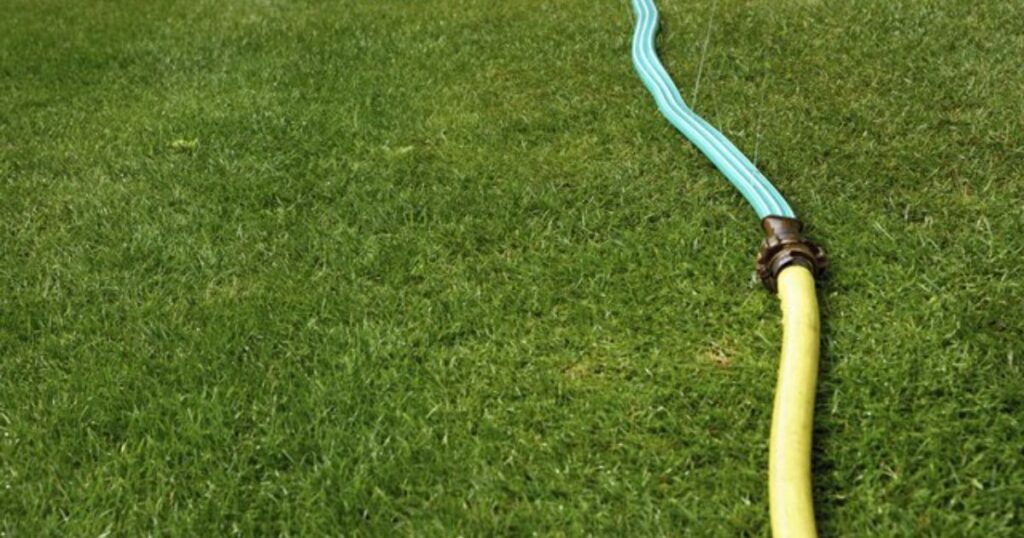
Attaching a garden hose for drainage is a straightforward process in hot tub maintenance. Once you’ve located the drain valve, grab a garden hose of sufficient length and connect it to the valve securely. Twist or clamp the hose onto the drain outlet, ensuring a tight fit to prevent leaks during the drainage.
Position the other end of the hose toward an appropriate drainage area, like a nearby floor drain, an outside area with proper runoff, or a designated location suitable for water disposal. This step is crucial for directing the drained water away from the immediate vicinity of the hot tub.
Before opening the drain valve, double-check the hose connection to guarantee it’s firmly attached. Properly securing the hose ensures a smooth flow of water without any unwanted spillage. Once the hose is securely in place, you’re ready to proceed with the next stages of the draining process.
Draining the Water Safely
Draining the water from your hot tub requires a careful and systematic approach to ensure safety and efficiency. Begin by confirming that the garden hose is securely attached to the drain valve and properly directed toward the drainage area.
Slowly open the drain valve to start the water flow. It’s advisable to release the water gradually to prevent overwhelming the drainage system or causing splashing. Monitor the draining process to ensure the water flows smoothly through the hose without any leaks or unexpected issues.
As the water level decreases, periodically check the hose connection and the drainage area to prevent any overflow or water accumulation in unwanted spaces. Stay attentive throughout the draining process to maintain control and prevent potential water damage to the surroundings.
Once the hot tub is empty, close the drain valve tightly to halt the water flow. Confirm that the valve is securely shut to prevent any residual dripping. This cautious approach ensures a safe and controlled drainage process, minimizing the risk of accidents or water-related damage.
Cleaning the Hot Tub Shell
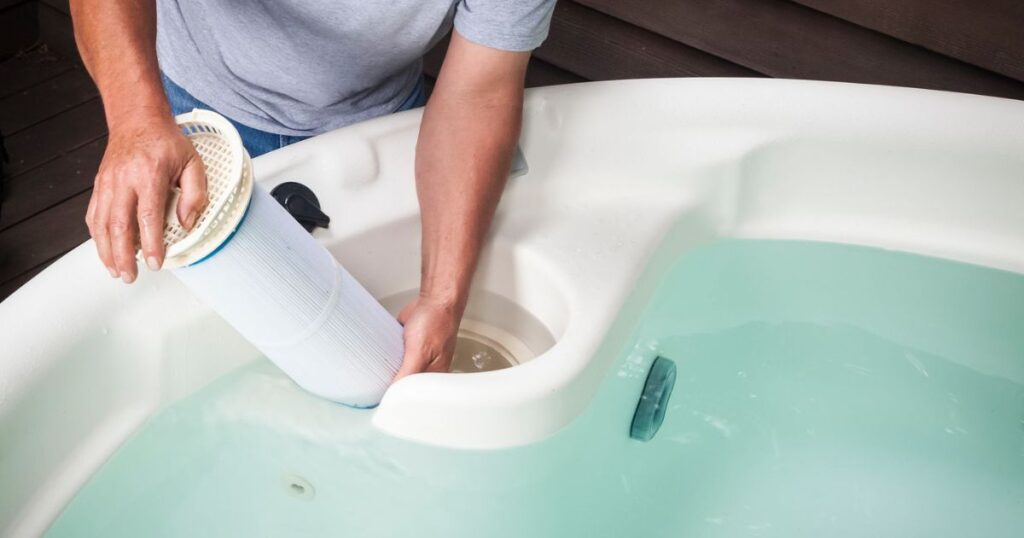
Cleaning the hot tub shell post-drainage is crucial for maintaining its hygiene and longevity. Start by using a mild, non-abrasive cleaner suitable for your hot tub’s surface. Apply the cleaner generously across the entire interior, including the walls, seats, and any hard-to-reach areas.
Using a soft cloth or a gentle sponge, scrub the surfaces to remove any dirt, residue, or buildup. Pay particular attention to areas prone to grime accumulation, such as water lines, corners, and jets.
Rinse the shell thoroughly with clean water to remove any cleaning solution residue. Ensure all traces of the cleaner are completely washed away to prevent any potential skin irritation or chemical interference when refilling the tub.
After cleaning, dry the interior using a soft towel to prevent water spots or streaks. This cleaning routine not only enhances the tub’s appearance but also helps maintain a clean and inviting environment for your next soak. Regular cleaning after drainage keeps your hot tub in optimal condition for prolonged enjoyment.
Refilling the Hot Tub
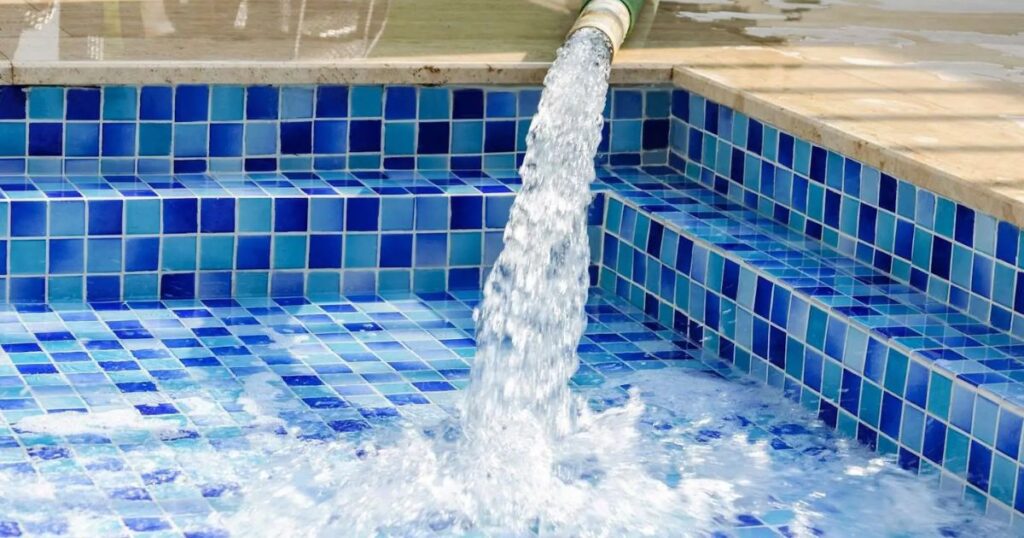
Refilling your hot tub after cleaning and draining is a straightforward process, but it requires attention to detail for optimal results. Begin by ensuring the drain valve is tightly closed to prevent any water leakage.
Next, using a garden hose, slowly fill the hot tub with fresh water. Monitor the water level as it rises, adjusting the hose to prevent overfilling. It’s recommended to use a hose filter to prevent adding impurities or sediment to the clean water.
As the tub fills, periodically check the water temperature to ensure it’s comfortable for use. Some hot tubs have temperature controls to help regulate the water heat during refilling.
Once the tub is filled to the desired level, turn off the hose and disconnect it from the hot tub. Take this opportunity to check for any leaks around the fill area and ensure all components are functioning correctly.
Finally, if necessary, balance the water chemistry by testing and adjusting the pH, alkalinity, and sanitizer levels according to your hot tub’s specifications. Following these steps ensures a safe, clean, and inviting environment for your next hot tub session.
Restarting and Rebalancing
Restarting and rebalancing your hot tub after refilling is essential for optimal performance and water quality. Begin by turning on the power supply and activating the hot tub’s filtration and circulation system. Allow the water to circulate for a few minutes to ensure proper distribution and mixing.
Use a water testing kit to check the pH, alkalinity, and sanitizer levels in the freshly filled water. Adjust these levels as needed to maintain a balanced and safe environment for soaking. Follow manufacturer guidelines or consult a professional for precise adjustments.
Monitor the filtration system to ensure it’s functioning correctly and efficiently removing any impurities from the water. Consider running the system for an extended period initially to ensure thorough filtration.
Once the water chemistry is balanced and the filtration system is operational, you can heat the water to your preferred temperature. This restart and rebalancing process ensure that your hot tub is ready for safe and enjoyable use, maintaining water clarity and hygiene for a relaxing soak. Regular maintenance and monitoring help sustain a pleasant hot tub experience over time.
Maintenance Tips for Regular Drainage
Certainly! Here’s a simple chart outlining maintenance tips for regular hot tub drainage:
| Maintenance Tips for Regular Drainage |
| 1. Frequency |
| Regularly drain every 3-4 months or as recommended by the manufacturer. |
| 2. Water Testing |
| Test water quality before draining to assess chemical levels and adjust as needed. |
| 3. Surface Cleaning |
| Clean the tub shell thoroughly after draining to remove dirt, grime, and residue. |
| 4. Filter Inspection |
| Check and clean filters or replace as required to maintain efficient filtration. |
| 5. Drainage System Check |
| Inspect the drainage system, ensuring valves and hoses are free from blockages. |
| 6. Refill and Balance |
| Refill the tub with fresh water and rebalance chemicals for safe and enjoyable use. |
| 7. Monitor Temperature |
| Check and adjust water temperature for comfort and safety after refilling. |
| 8. Routine Maintenance |
| Conduct regular checks on components and follow manufacturer guidelines for upkeep. |
This chart provides a quick reference for maintaining your hot tub through regular drainage, ensuring a clean, safe, and enjoyable experience for an extended period.
Pros and Cons
Certainly! Here’s a chart outlining the pros and cons of draining a hot tub:
| Pros | Cons |
| Pros: | Cons: |
| 1. Maintains Hygiene: | 1. Time-consuming: |
| Draining removes debris, oils, | The process can take time, |
| and contaminants, enhancing | especially if cleaning is |
| cleanliness. | required. |
| 2. Prevents Issues: | 2. Water Waste: |
| Regular drainage prevents | Significant amounts of water |
| clogging and bacterial growth, | are wasted during draining. |
| extending tub life. | |
| 3. Allows Maintenance: | 3. Chemical Adjustments: |
| Cleaning post-drainage | After refilling, chemical |
| permits inspections and | balancing is necessary, adding |
| maintenance. | to upkeep efforts. |
| 4. Water Quality: | 4. Initial Setup Post-Drainage: |
| Fresh water improves | Restarting and rebalancing |
| water quality for a better | require time and monitoring. |
| soaking experience. |
This comparison highlights the advantages and drawbacks of the hot tub draining process, aiding in decision-making and understanding the trade-offs involved in maintenance.
FAQ’s
Is it OK to leave hot tub empty?
Letting your hot tub sit empty in the summer isn’t a problem provided that you have it properly secured with a cover. Having your hot tub covered is essential – in fact, one of the easiest ways that an acrylic hot tub can be damaged is by being left empty in direct sunlight.
Where is hot tub drain valve?
Facing the main controls of your hot tub, you should see a drain cap at the bottom of the spa. Remove the cap & you’ll see a hose nozzle/valve.
Can a hot tub drain on its own?
It has a spring-loaded “flap seat” that stops water from flowing. If anything gets trapped within that valve, such as debris, it can disturb the flap and prevent the valve from sealing properly. That allows the water to flow backward and drain instead of remaining inside your hot tub.
How often should I drain my hot tub?
drain your hot tub every 3-4 months. Contaminants like. sweat, body oils and bacteria can build up over time in. your hot tub lines.
Conclusion
Draining a hot tub is a vital maintenance step, ensuring cleanliness, preventing issues like clogging, and prolonging its lifespan. Regular drainage removes debris and contaminants, maintaining water quality for a more enjoyable and hygienic soaking experience. Despite its benefits, this process demands time and effort, involving tasks like cleaning, refilling, and chemical balancing.
However, the trade-offs, such as water wastage and the need for post-drainage adjustments, are outweighed by the long-term advantages. The opportunity for thorough inspections and maintenance post-drainage enhances the tub’s functionality and durability. While the process may seem intricate, its positive impact on hygiene, performance, and the overall hot tub experience makes it an essential aspect of responsible ownership, ensuring a clean, safe, and rejuvenating soak every time.
